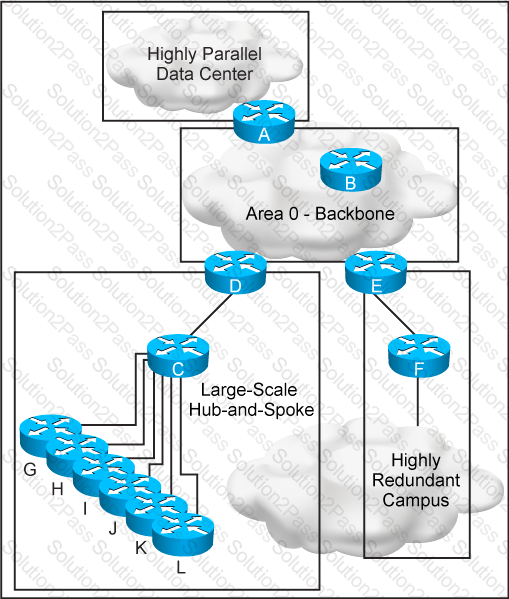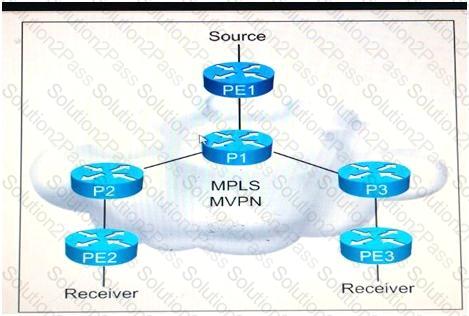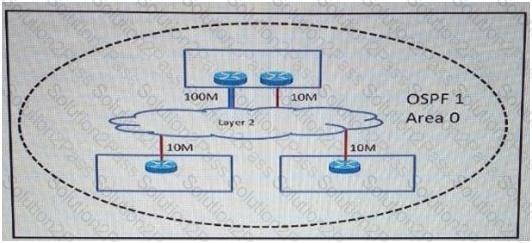352-011 Cisco Certified Design Expert Practical Exam Free Practice Exam Questions (2025 Updated)
Prepare effectively for your Cisco 352-011 Cisco Certified Design Expert Practical Exam certification with our extensive collection of free, high-quality practice questions. Each question is designed to mirror the actual exam format and objectives, complete with comprehensive answers and detailed explanations. Our materials are regularly updated for 2025, ensuring you have the most current resources to build confidence and succeed on your first attempt.
Which design benefit of Bridge Assurance is true?
A service provider wants to use a controller to automate the provisioning of service function chaining. Which two overlay technologies can be used with EVPN MP-BGP to create the service chains in the data center?
Which feature or technology that affects the operations of IPsec should be taken into account when designing an IPsec network using Authentication header?
Which interconnectivity method offers the fastest convergence in the event of a unidirectional issue between three Layer 3 switches connected together with routed links in the same rack in a data center?
Refer to the exhibit.

This new OSPF network has four areas, but the hub-and-spoke area experiences frequent flapping. In order to fix this design failure, which two mechanisms can you use to isolate the data center area from the hub-and-spoke area without losing Ip connectivity? (Choose two)
Refer to the exhibit.

You are a network designer who is given these design requirements:
Multicast services must be provided for Layer 3 VPN customers
The same forwarding technology must be used as Layer 3 VPN unicast packets
Replication of multicast traffic is not allowed on the ingress PE
Which multicast VPN technology conforms to the design requirements?
You are reviewing a new data center design for a customer. They chose to leverage a tunnel-based overlay technology for quick deployment and multitenant security. Which design concern can affect the availability across the data center?
Which two items are required for data plane hardening of an infrastructure device? (Choose two)
Which mechanism does OSPF use to prevent loops in an MPLS Layer 3 VPNS environment?
How must queue sizes be designed to ensure that an application functions correctly?
Refer to the exhibit.

An enterprise has three sites over a Layer 2 Metro Ethernet ELAN service. 100Mb/s and 10 Mb/s links have been provisioned to provide redundancy for the head office. When OSPF routing enabled to provide connectivity and the correct bandwidth statement has been applied to each interface, the branch sites observe two equal-cost routes to the head office. The enterprise wants to send all traffic through the 100 Mb/s link and use the 10Mb/S link strictly as a backup. Which OSPF network type must be set to ensure that the head office 100 Mb/s circuit is preferred over the 10 Mb/s circuit, at the same time minimize the amount of configuration required on all of the routers throughout the network?
Which three network management requirements are common practices in network design? (Choose three)
A new video multicast application is deployed in the network. The application team wants to use the 239.0.0.1 multicast group to stream the video to users. They want to know if this choice will impact the existing multicast design. What impact will their choice have on the existing multicast design?
Which mechanism provides fast path failure detection?
As network designer, which option is your main concern with regards to virtualizing multiple network zones into a single hardware device?
For a redesign requirement of the service provider network, summarization was implemented at multiple locations for each summary range. Now some customers of the service provider are complaining of higher latency and performance issues for a server hosted in the summarized area. Which design issues must be considered when creating the summarization?
The service provider that you work for wants to offer IPv6 internet service to its customers without upgrading all of its access equipment to support IPv6, which transition technology do you recommend?
A switched network is being designed to support a manufacturing factory. Due to cost constraints, fiber-based connectivity is not an option. Which design allows for a stable network when there is a risk of interference from the manufacturing hardware in use on the factory floor?
Your customer asked you to redesign there is-IS network to reduce to a minimum the number of adjacencies because the network has several routers running L1/L2 mode on the sme Ethernet segment. Which action do you recommend?
You are designing an IPv4 any source multicast redundancy solution. Which technology ensures the quickest RP convergence?
